Abstract
The evolutionary significance of interspecific aggression as a factor in speciation was tested among three chromosome forms of the actively speciating fossorial rodent Spalax ehrenbergi in Israel. Laboratory experiments testing intra- and interspecific aggression were conducted on 48 adult animals from 10 populations comprising three chromosome forms with 2n = 52, 58, and 60. Twelve agonistic, motivational-conflict, and territorial behavioral variables were recorded during 72 combats involving homo- and heter-ogametic encounters between opponents. Analysis of the data matrix was carried out by the nonmetric multivariate Smallest Space Analysis (SSA-II). The results indicate that (a) aggression patterns, involving agonistic conflict and territorial variables, are higher in heterogametic encounters than in homogametic ones; and (b) aggression is higher between contiguous chromosome forms (2n = 58-60, and 2n = 52-58) than between noncontiguous ones (2n = 52-60). Both a and b suggest that high interspecific aggression appears to be adaptively selected at final stages of speciation in mole rats as a premating isolating mechanism which reinforces species identification and establishes parapatric distributions between the evolving species.
Full text
PDF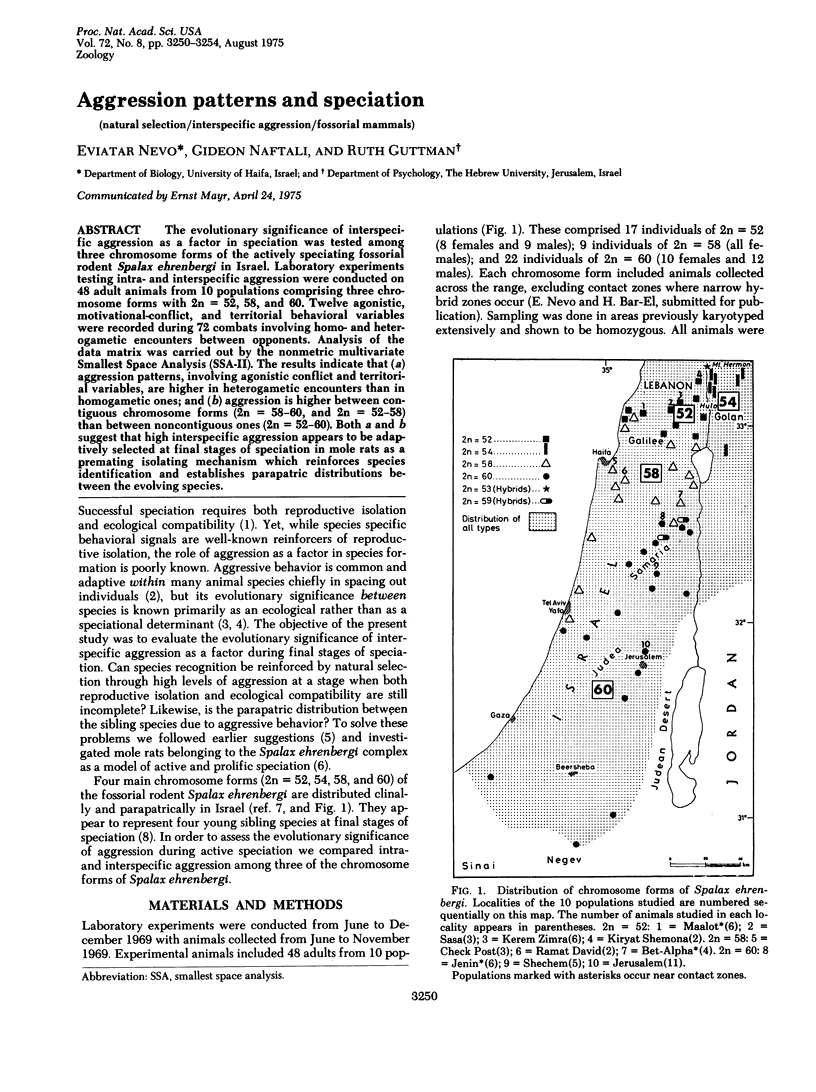
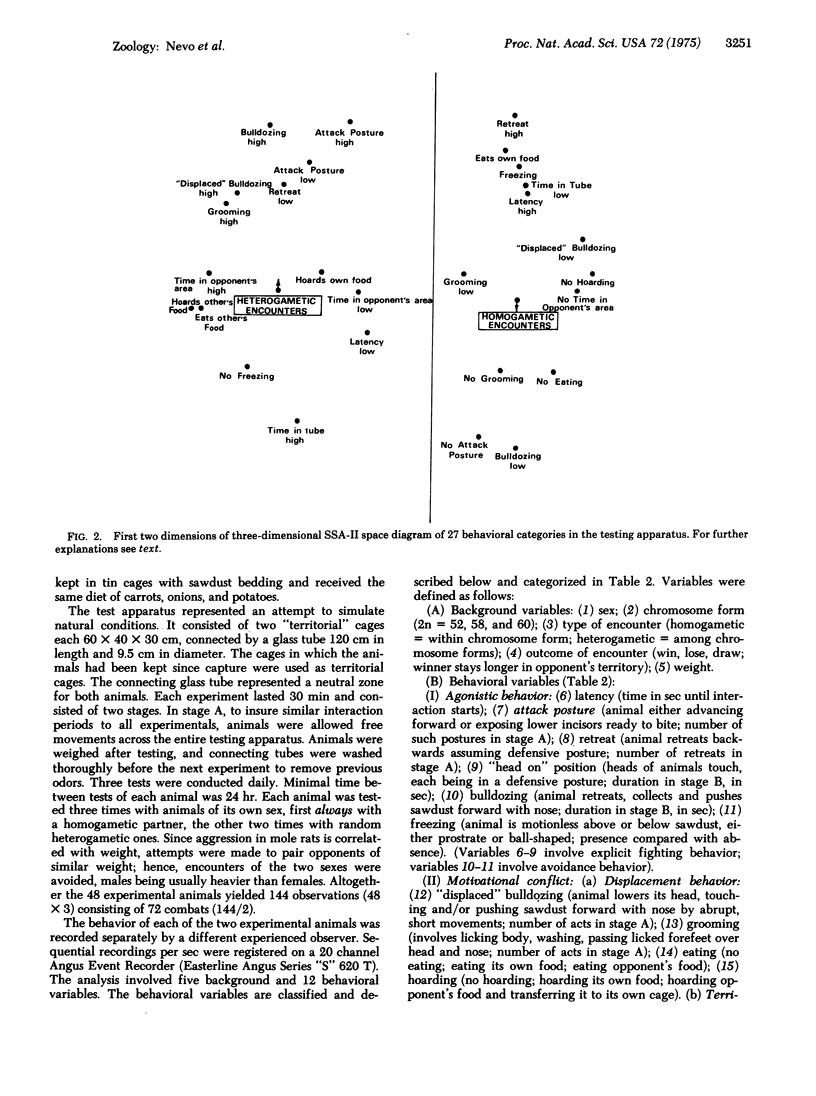
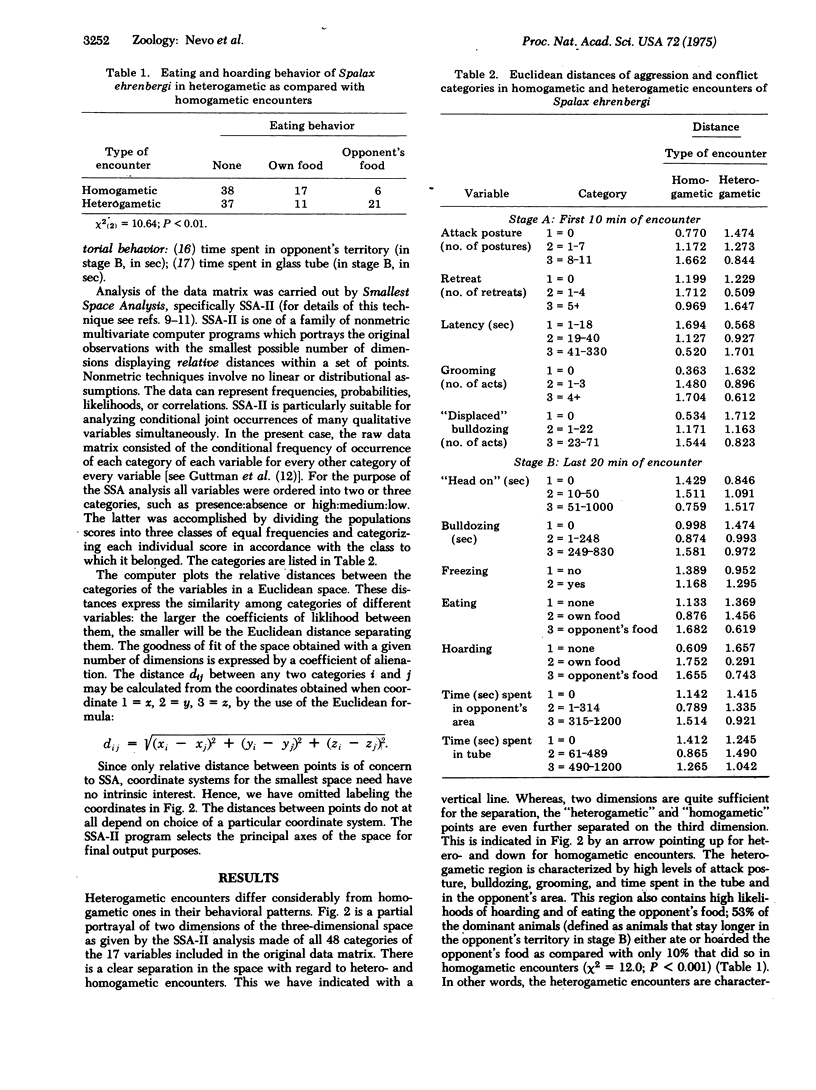
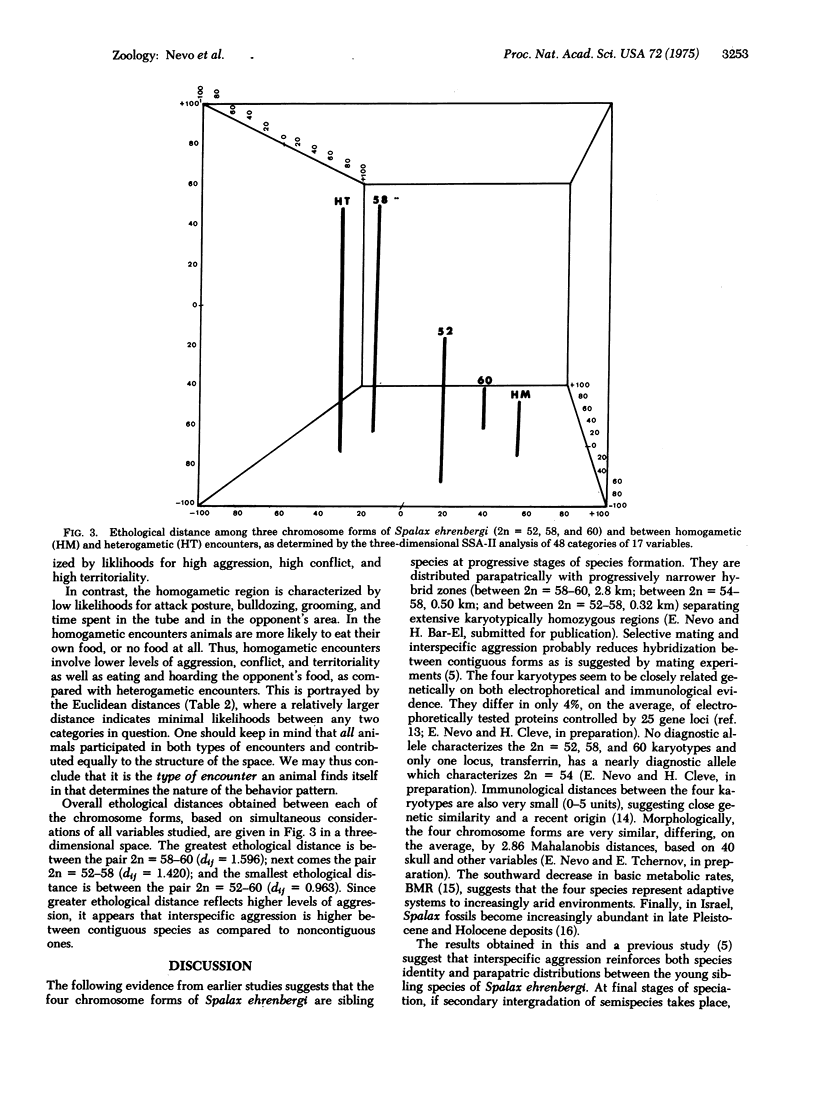
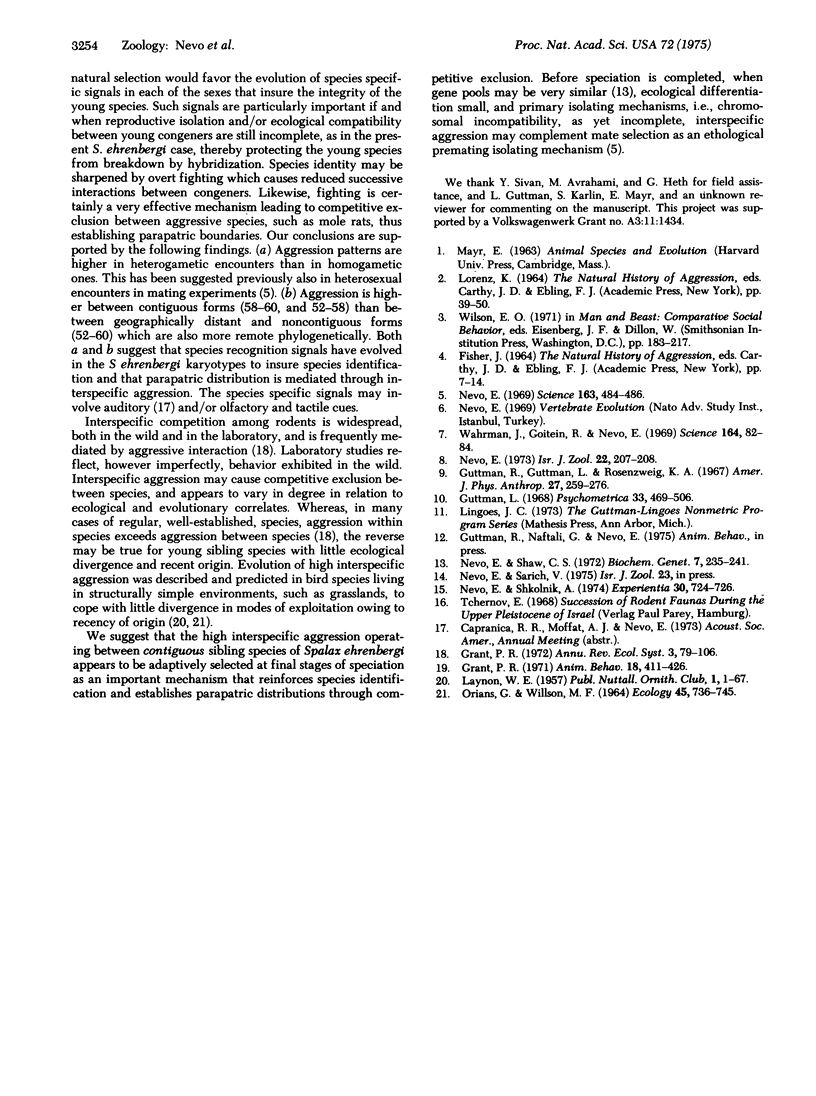
Selected References
These references are in PubMed. This may not be the complete list of references from this article.
- Guttman R., Guttman L., Rosenzweig K. A. Cross-ethnic variation in dental, sensory and perceptual traits: a nonmetric multibivariate derivation of distances for ethnic groups and traits. Am J Phys Anthropol. 1967 Nov;27(3):259–276. doi: 10.1002/ajpa.1330270302. [DOI] [PubMed] [Google Scholar]
- Nevo E. Mole rat spalax ehrenbergi: mating behavior and its evolutionary significance. Science. 1969 Jan 31;163(3866):484–486. doi: 10.1126/science.163.3866.484. [DOI] [PubMed] [Google Scholar]
- Nevo E., Shaw C. R. Genetic variation in a subterranean mammal, Spalax ehrenbergi. Biochem Genet. 1972 Dec;7(3):235–241. doi: 10.1007/BF00484821. [DOI] [PubMed] [Google Scholar]
- Nevo E., Shkolnik A. Adaptive metabolic variation of chromosome forms in mole rats, Spalax. Experientia. 1974 Jul 15;30(7):724–726. doi: 10.1007/BF01924150. [DOI] [PubMed] [Google Scholar]
- Wahrman J., Goitein R., Nevo E. Mole rat Spalax: evolutionary significance of chromosome variation. Science. 1969 Apr 4;164(3875):82–84. doi: 10.1126/science.164.3875.82. [DOI] [PubMed] [Google Scholar]


